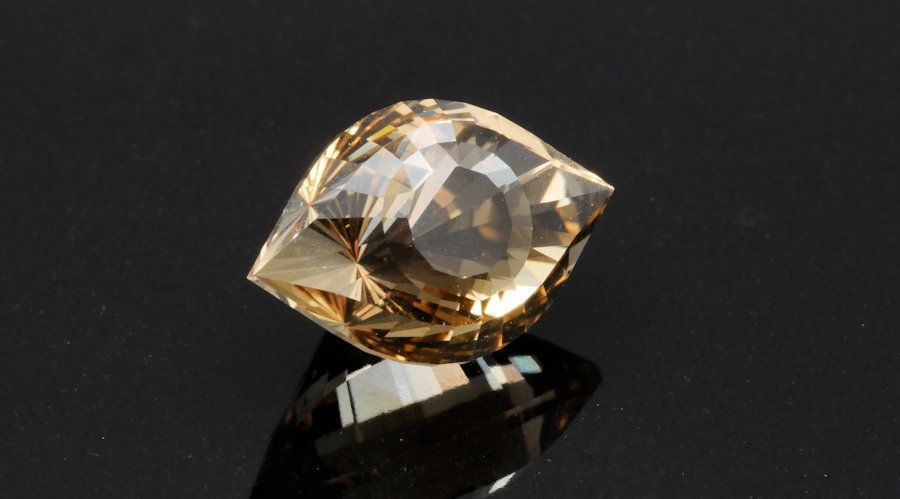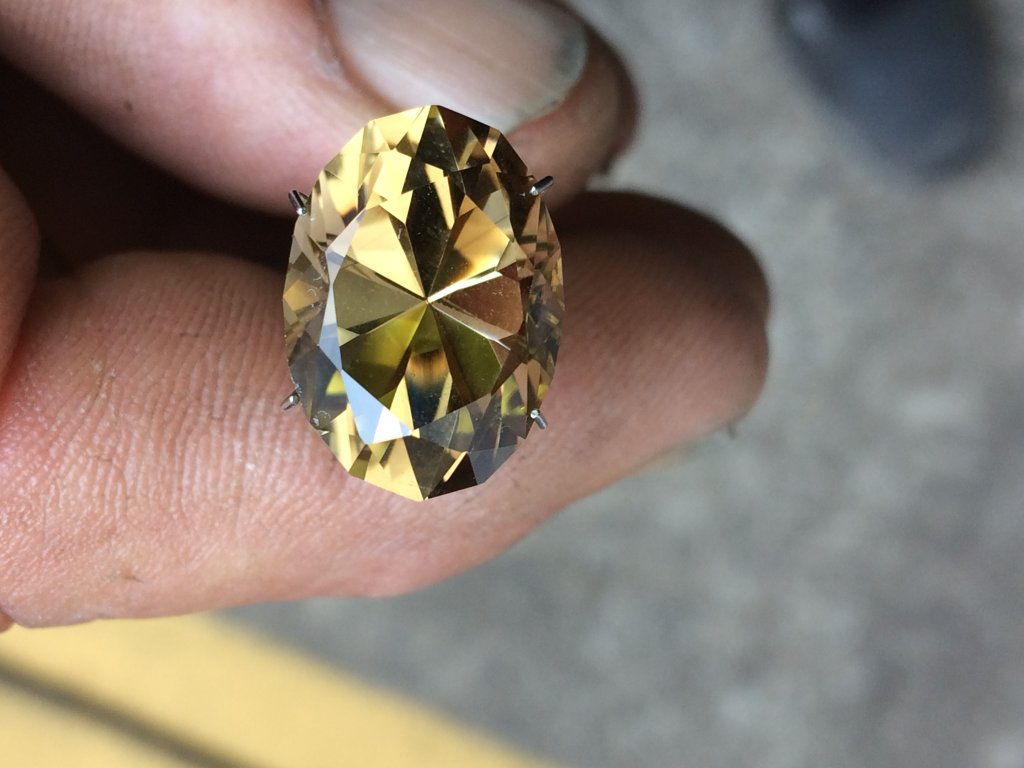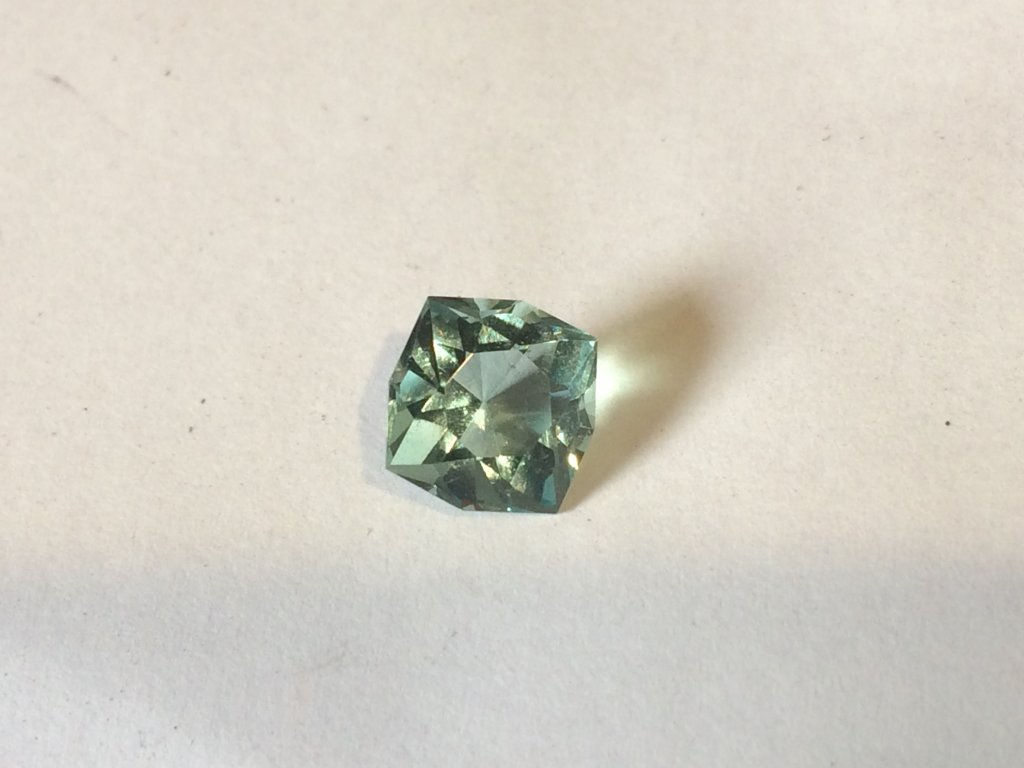Hi Harry, anyone can cut this provided their pre-polish and polish laps are flat, machine is accurate and they know how to 'push' facets if they are slightly out, but it is definitely not a beginners design.
Ovals are notorious for producing bow-ties, particularly when they have a keel as opposed to a culet. This is where oval designs that maintain a constant angle for the main pavilion facets work better, then have barion facets to control the shape. This does produce a deeper stone than a keel, but goes a long way to overcome the problem.
The Cleopatra's Eye cut is a good example, the stone has 24 main pavilion facets at the same angle, then the shape is controlled by 12 pairs of barions. The finished stone does not exhibit any bow tie effect. It's a Marquise shape so different from an oval but still retains the same potential problems.
The longer the oval ratio the worse the problem. I rarely cut ovals for this reason.
Look for oval designs where the pavilion mains sit within the optimum angles, clear quartz: 41-43 degrees, coloured can go to 45 degrees, and this will go a fair way to reducing the effect.
Girdle problems I can't really help without seeing what you are doing. Do you cut a witness facet before transferring? This allows you to set the alignment and create a 'master cheat' when you start on the crown. Once you've set a master cheat, it stays for all the crown work. It goes a long way to overcoming girdle break stepping, but might need a final little tweak once you do your first round of pre-polish.
If your lap is hollowed or your machine is not aligned, front to back across the full width of the lap, you are going to be battling to get your facets right. What machine are you using?
Hugh.







